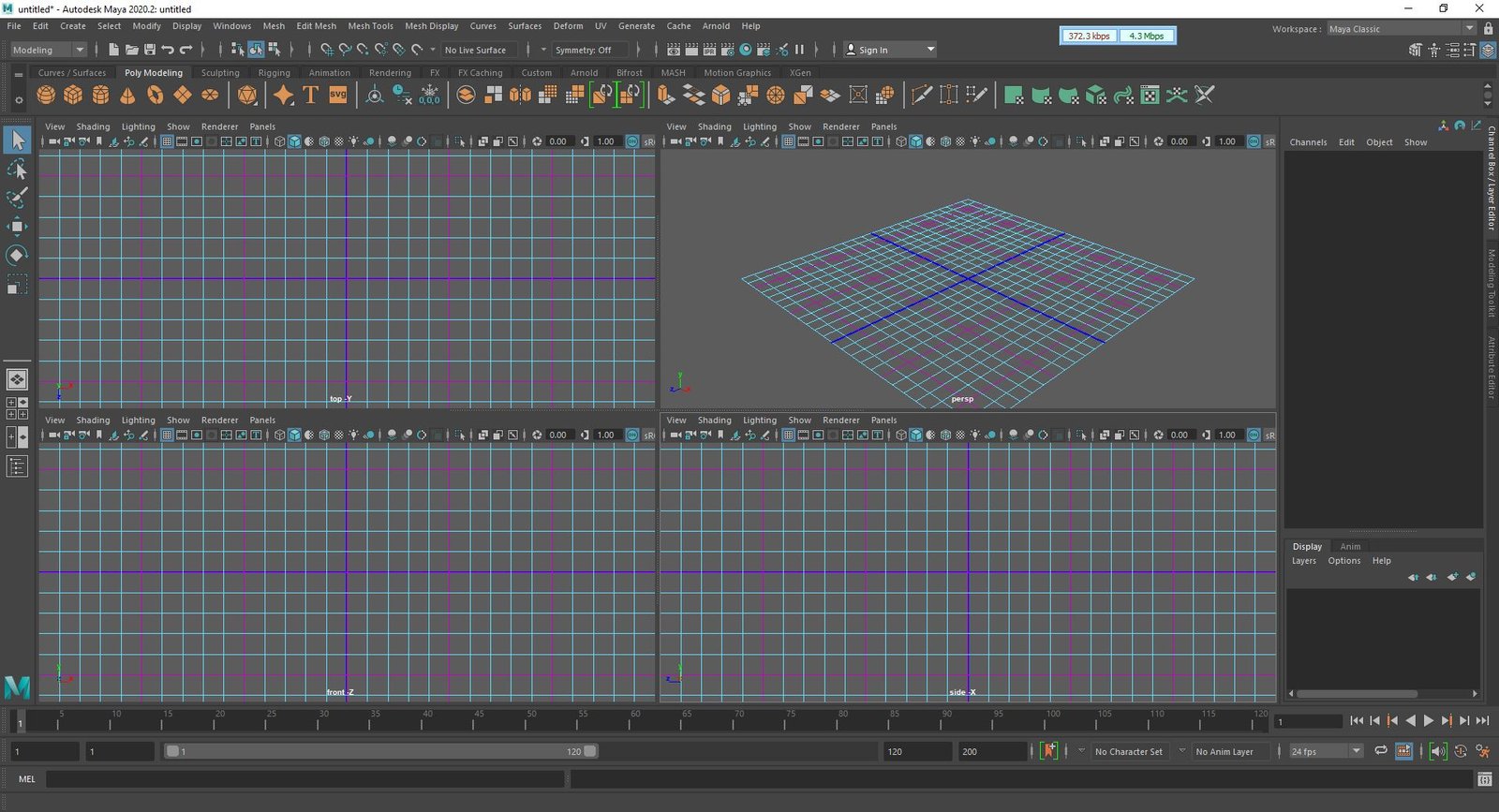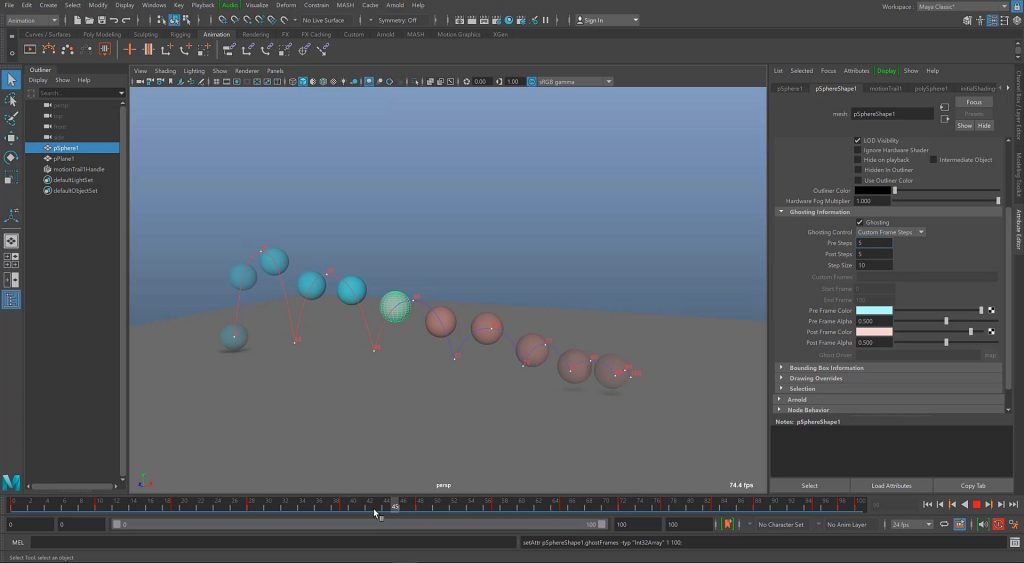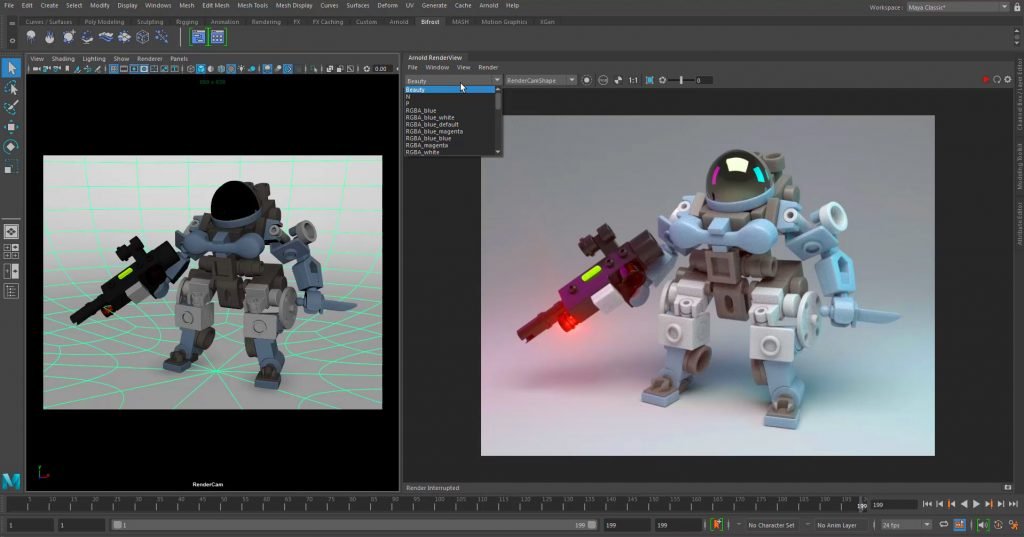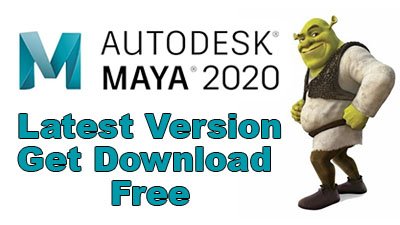Download Any Software Without Open Ads Pages. Just Wait 30 Seconds And Your Downloading Button is Ready for Download.
Wait for Access
Your Requested Resource Will Be Granted From Our Linux Server..!!


Autodesk Maya 2020.2 Minimum System Requirements:
Autodesk Maya 2020.2 has some requirements which are mentioned as follows:
RAM : 4-GB
Hard Disk Space : 3 GB
CPU : 1 Gigahertz (GHz) or Faster Processor
Graphics : Microsoft DirectX 9 or Later with WDDM 1.0 Driver
Autodesk Maya 2020.2 Include in This Version:
1- New Remesh and Retopologize orders
2- Arnold GPU
3- Image Plane help
4- Flush from Time Slider
5- Support for Smooth Work Review
6- Cached Playback whitepaper
7- Layered elements
8- Picture planes
9- Smooth Work Review
10- Specialized
11- Activity BOOKMARKS
12- Delivering
11- Genuine Impacts
12- VIEWPORT Enhancements
11- Displaying
12- Gear
What’s New in Maya 2020.2

Welcome to Maya 2020! This delivery gives new apparatuses and updates to support illustrators, modelers, riggers, and specialized craftsmen be more effective and beneficial so they can invest more energy in the innovative.
There’s no denying there is a great deal here for illustrators to be upbeat about: more than sixty new movement highlights expand on the Maya 2019 delivery, in addition to new Time Slider bookmarks to assist you with sorting out your work in time and playback ranges. Updates to Reserved Playback give new review modes and proficient storing for picture planes and elements, giving you quicker playback and more unsurprising outcomes.
New Remesh and Retopologize orders let modelers invest less energy tidying up models, and for riggers and character TDs, we have new network driven work processes in addition to another wrap deformer. By and large, we trust you’ll see a smoother in general involvement in the viewport, since we’ve made a few upgrades that utilize your equipment.
Arnold GPU delivering is newly out of beta and included with Maya 2020, close by the new form of Bifrost that conveys critical execution upgrades and a few new pre-construct diagrams. Look at the remainder of the What’s going on for subtleties!
- Image Plane help: Picture planes are currently stored with Reserved Playback. In the event that your scene contains a grouping of pictures applied onto a picture plane, the pictures are stacked out of sight and put away in the Assessment store. Already, pictures were stacked and put away upon first playback, and added to slow execution.
Note: Reserved Playback for Picture planes is just upheld in Assessment store mode. You can no longer reserve picture planes with the Viewport Programming or Viewport Equipment storing modes. See Pick a mode for reserved playback for data on Storing modes.
- Flush from Time Slider: You would now be able to flush the store legitimately from the Time Slider by right-clicking it and choosing Reserved Playback > Flush Reserve from the Activity Controls menu. For data about flushing the store, see the Nullification segment in the Reserved Playback Status Line states point.
- Support for Smooth Work Review: Smooth Work See currently utilizes less memory when utilized related to stored playback. Become familiar with Storing Smooth Cross sections, in the Reserved Playback Inclinations.

This setting is debilitated naturally, which means Smooth Work Review isn’t stored. Enact Store Smooth Cross sections to add Smooth Work Review to the rundown of procedures to be reserved. It doesn’t influence the showcase of Smooth Work Review on the off chance that you had it dynamic on your shape.
- Cached Playback whitepaper: For riggers, TDs, and module creators who need to comprehend the Stored Playback design so they can profit by ongoing execution improvements in Maya, we’ve given more far reaching clarifications of Reserved Playback in the Maya Stored Playback whitepaper.
Stored Playback Elements support

In past forms of Maya, Reserved Playback was crippled at whatever point the storing procedure experienced powerful hubs, for example, Chief, or Core. Reserving was crippled and the status line and symbol would go yellow to show it was in Experimental Mode. Presently, Stored Playback can process Elements Recreation content in a different pass, which shows up in the Time Slider simply over the Liveliness Reserve Status line.
Maya 2020 includes new instruments that engage craftsmen all through the creation pipeline. Regardless of whether you’re centered around liveliness, gear, displaying, or impacts, we’ve pressed a ton into this delivery to assist you with working quicker and without inventive cutoff points, including more than 60 movement refreshes, new recreation includes in Bifrost, and the most recent variant of Arnold with the choice to deliver on both the GPU and CPU.
Layered elements storing isolates foundation handling of elements and the center liveliness inside a scene. With elements reserving on an auxiliary layer, you can keep working and see reproductions like material and muscles running continuously as you vitalize.

Picture planes are presently stored a similar path as movement through Reserved Playback. In the event that a scene has a succession of pictures applied onto a picture plane, as opposed to stacking the pictures during playback, Maya presently stores the pictures straightforwardly in the assessment reserve, taking into consideration a lot quicker playback.
Smooth Work Review currently utilizes less memory and runs sneak peaks on the GPU whenever the situation allows. This is particularly helpful when working with thick, resource overwhelming scenes where memory cutoff points can be reached rapidly.
Specialized clients would now be able to set custom arrangements for Stored Playback for the hubs they fabricate. Various designs and presets can be composed to exploit the adaptability of Stored Playback, permitting you to organize what gets reserved and what doesn’t.

The new Ghosting sneak peak permits you to see the presence of past and future developments. This is helpful when effectively taking a shot at a scene that requires nuanced execution. In view of on criticism from illustrators, we’ve additionally incorporated the capacity to color your lattices and expel surfaces for more clear outlines.
Activity BOOKMARKS:
Utilizing new Activity bookmarks, you would now be able to check, explore through, and arrange explicit occasions in time just as effectively zoom into playback ranges in the Time Slider. You can choose start and end outlines and allocate various hues to bookmarks to recognize them. Drifting over a bookmark unmistakably features the time it involves in the Time Slider and shows any notes you’ve made.
Delivering:
Arnold 6 is incorporated with Maya 2020 and would now be able to be utilized for creation delivering on both the CPU and GPU. From look improvement to conclusive edge delivering, Arnold 6 with Arnold GPU rearranges the way toward making and repeating on content, giving you the speed and adaptability to adjust to the recurring patterns of creation. Arnold’s instinctive interface makes it simple to flip among CPU and GPU delivering, keeping up similar settings with a solitary snap. Arnold GPU depends on NVIDIA’s OptiX structure and upgraded to exploit NVIDIA RTX innovation. You can even drag a crate in the viewport and watch your render update as you work.
Genuine Impacts:
Hot closely following the principal arrival of Bifrost for Maya at SIGGRAPH 2019, this most recent update adds much more capacity to the new visual programming condition, including noteworthy execution and strength upgrades, support for Reserved Playback, improved Arnold support, new MPM fabric requirements, more pre-constructed charts to assist craftsmen with beginning, and more than 100 bug fixes driven by client criticism.
VIEWPORT Enhancements:
It is currently quicker to interface with or select thick math or work with huge quantities of littler cross sections in the viewport and UV editors. These progressions bring about an observable presentation improvement that will assist you with seeing preselection quicker and explore all the more without any problem. Other basic situations like depending on Disengage Select have additionally been accelerated.
Displaying:
Another Remesh instrument permits you to determine precisely where you need additional detail on a model by rethinking the geography of any territory on the work. With this update, you are likewise ready to equitably re-locate the work at various densities, guaranteeing uniform appropriation of countenances.
The ideal ally to the Remesh device, Retopologize makes it brisk and simple to tidy up networks. Retopologize produces perfect, new geography that safeguards the first work shape while reproducing the surface geography into equitably circulated quads. The outcome is a deformable, creation cordial work that can keep descending the pipeline.
Gear:
New grid driven change and activity hubs help decrease hub and association mess in your scenes. Prior to this update, limitations in Maya did most calculation as grid math, at that point deteriorated the outcome into scale, pivot, and interpretation channels to drive another change. The determined change at that point took those qualities and made a lattice to process its position. This new framework driven work process permits you to avoid the decay and structure steps, while additionally keeping the scale, turn, and interpretation channels accessible for liveliness. Therefore, riggers no longer need to make the same number of DAG hubs to give illustrators access to invigorate capable channels. As you can envision, there’s a great deal to this idea – make a point to check our documentation for more data.
Vicinity and UV Pin hubs can be utilized to absolutely follow positions on disfiguring math. These hubs are particularly helpful for assignments like adding a prop to a character, for example, staying a catch on a shirt, or setting up a basic imperative apparatus.
The new GPU-quickened Closeness Wrap deformer brings better memory use and a noteworthy exhibition lift to your work processes, making it simpler to accomplish smooth outcomes.

